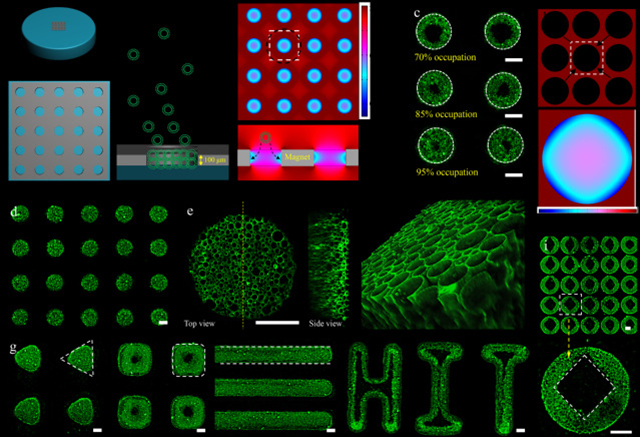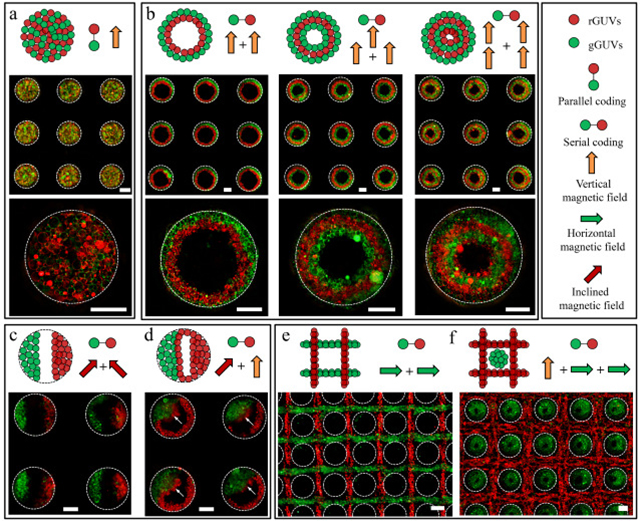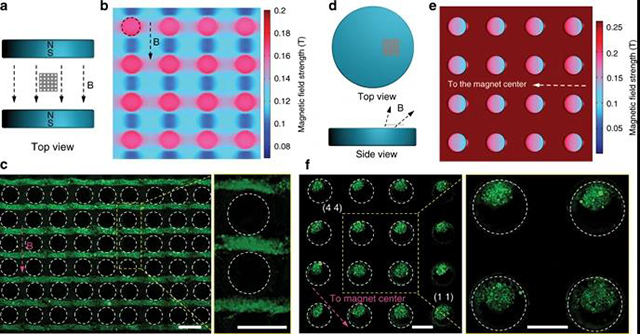HIT NEWS (Photo / Text, School of Chemistry and Chemical Engineering)With the support of the National Natural Science Foundation of China, the team of Professor HanXiaojun of the School of Chemistry and Chemical Engineering, which is a member of the State Key Laboratory of Urban Water Resource and Environment, has made important progress in the field of artificial tissues. The research result—“Programmed magnetic manipulation of vesicles into spatially coded prototissue architectures arrays”—was published in the journalNature Communication, which is one of the series of Nature. Professor HanXiaojun is the only corresponding author, and Harbin Institute of Technology(HIT) is the only signing unit.
In nature, tissues are composed of cells arranged in a specific patternto perform higher-level biological functions than individual cells. Developing research on tissue construction based on artificial cells can help usunderstand the evolutionary mechanism of multicellular organisms, and provide a basis for the design and construction of artificial tissues that can be implanted in the body. In contrast to the attraction of ferromagnetic materials under application of magnetic fields, diamagnetic materials, such as cells, are subject to repulsive forces under application of magnetic fields. Generally, diamagnetic materials are subject to relatively small magnetic susceptibility, so the magnetic force they receive is negligible. According to the magnetic Archimedes effect, the effect of diamagnetic force can be enhanced and the diamagnetic material can be driven to the weakest local magnetic field by introducing a paramagnetic medium. Using the above principles, this work assembles artificial cells into various tissue forms with specific spatial arrangements inside a stainless steel mesh. The artificial tissue constructed exhibits abnormal stability under conditions of high salt concentration (1M) and pure water, reflecting the group-specific behavior of such structures and indicating that the cell population has a survival advantage over a single cell in the process of life evolution. Meanwhile, the cascade reaction of enzymes between artificial cells and the exchange of chemicals between artificial cells and cell colonies are studied. The artificial tissue construction method shown in this achievement has wide application prospects in synthetic biology and tissue engineering.
Professor HanXiaojun has been engaged in the research of fields related to artificial cells for many years. In recent years, he has obtained a series of high-level research results. He has published a series of research papers in journals such as Journal of the American Chemical Society(J.Am.Chem.Soc., 2017, 139, 9955, Impact Factor:14.357), Advanced Materials(Adv.Mater.,2018,30, 1707482,Impact Factor:21.950),ACS Nano(2014,8,3961,2019,3,3573,Impact Factor:13.709), iScience(2018,8,138),andChemical Science(2019,10,9446,Impact Factor:9.556), some of which are hot topics, VIP, and cover papers. He has presided overmore than 20 projects, including the National Natural Science Foundation of China, the New Century Excellent Talents Foundation from the Ministry of Education of China, andtheHeiLongjiang Fund for Distinguished Young Scholars, and has published more than 150 SCI papers so far .
Article Link:https://www.nature.com/articles/s41467-019-14141-x
Personal Homepage:http://homepage.hit.edu.cn/xiaojunhan



Schematic Diagram of Relevant Achievements


